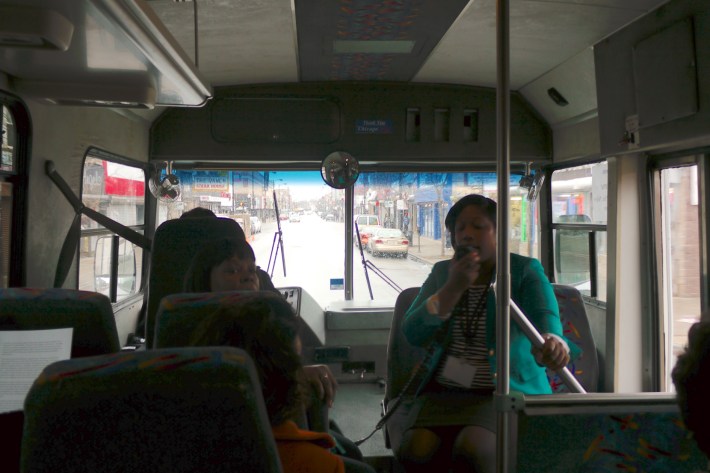The Chicago Transit Authority has been planning an extension of the Red Line from its current terminus at 95th Street for decades and I joined a tour group at the Congress for New Urbanism’s transportation summit last week to see the proposed station locations. Development Communities Project's board member Phyllis Palmer led the tour because the Chicago Metropolitan Agency for Planning has provided DCP with a Local Technical Assistance grant to prepare the Greater Roseland communities for the extension.
Palmer told the group that former Mayor Richard J. Daley promised an extension to happen in about 10 years after the Dan Ryan branch opened in 1969. Obviously that hasn’t happened, but the CTA gets a tiny bit closer every year.
DCP organizes meetings, called Panels of Discussion and occurring at central churches, that invite business owners and neighbors around each station to talk about how to develop the surrounding buildings and land, and to advise the CTA in its planning.

About 20 other summit attendees took the bus tour of these neighborhoods, asking questions of Palmer and CMAP project planner Kendra Smith. Two of the main but informal discussions we held on our shuttle revolved around local bus transit service, including existing conditions and possible enhancements like bus rapid transit, as well as improving and integrating Metra service into the neighborhood's transit connections.
The second discussion, like many about improving Metra, had no answers and no conclusion. The existing service consists of the Electric line to downtown, but only during rush hours. Metra service to Chicago State University is also spotty as some classes end after train service, so Electric trips between CSU and the neighborhood's State Street station aren’t possible at night.
Smith and Palmer described the problems with bus service: route times, connections between routes, and delays. Only one bus route runs overnight (making access to the 24-hour Red Line difficult) and residents experience disconnected bus schedules. Smith said that for an interim improvement, "residents are vigilant about getting the CTA to link up schedules."
CMAP’s study of the Red Line extension shows that hundreds of thousands of jobs, and dozens of colleges, are unavailable by transit to residents in one hour. Trips to north side universities require several transfers as many of the buses operate in silos, only bringing neighbors from their home to a place where they can make a connection towards their final destination.
Palmer cited the long delays created by Union Pacific freight train activity as one reason why rapid bus service would be infeasible and undesirable. Smith said that another reason the communities rejected BRT was because of buses being unable to move well in snow storms, compounding the neighborhood's disconnection. Smith added that "BRT doesn't fit the bill for their quality of life," and noted that many of the buses, especially the one to Altgeld Gardens, are packed.
The CTA's alternatives analysis in 2009 looked at BRT [PDF], but not improving Metra service, perhaps another example of many showing the lack of good regional transit planning. BRT was rejected because, among other reasons, narrow road width.
The neighborhoods have other transportation deficiencies. 130th Street near the over 3,000 residents of Altgeld Gardens lacks sidewalks and there’s only one bike lane, which we spotted on 103rd Street. Smith said it wasn’t there the last time she was in the area. Lastly, Smith declined to call the Metra Electric State Street stop a station because the service has only an inaccessible platform and single track.
From the tour it looks like the Greater Roseland community is preparing itself well for the eventual extension – which currently lacks a local funding match – by setting up business owners to be proactive and empowering residents to advocate on their behalf for the service.






